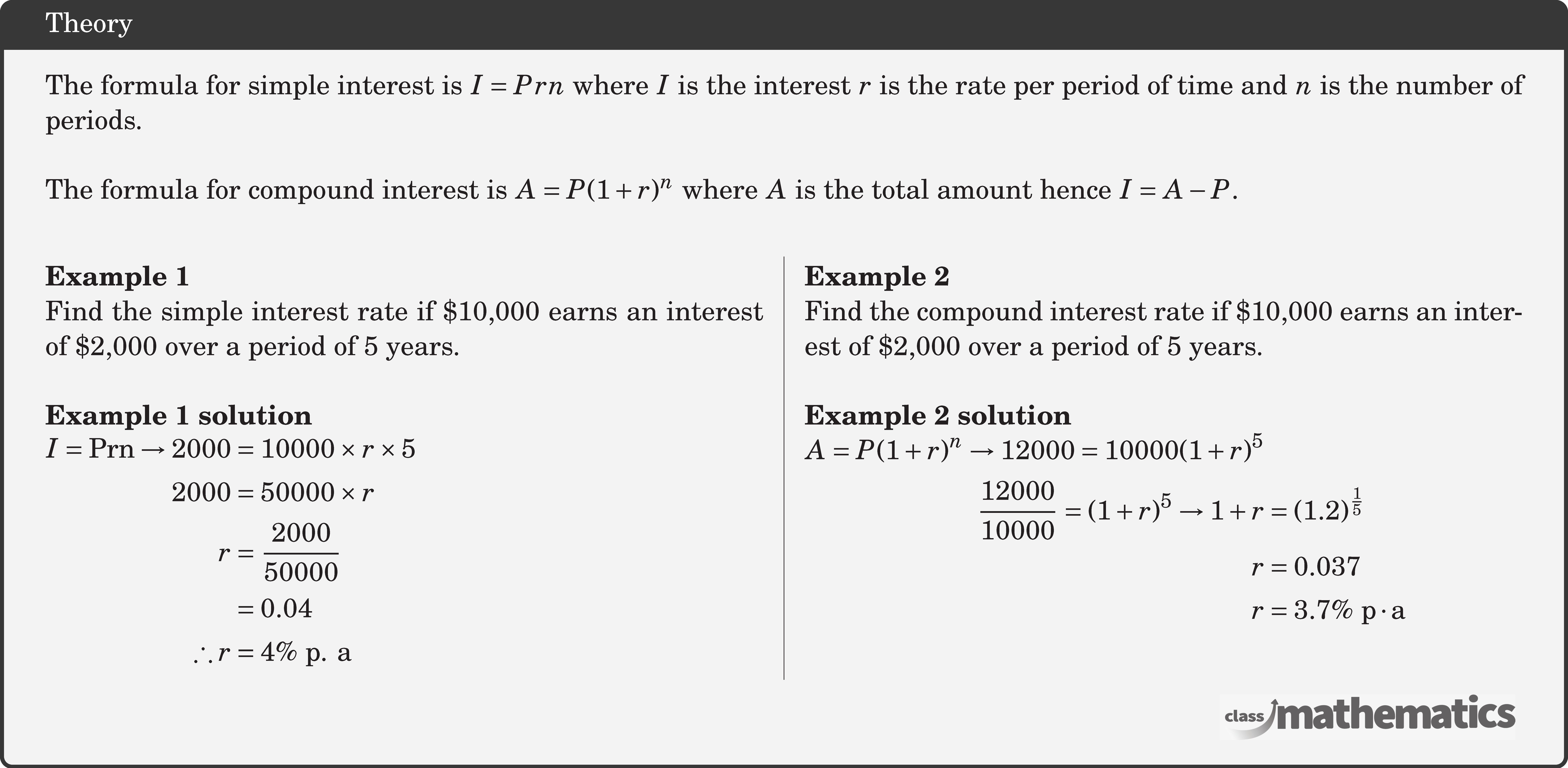Resources for Simple and Compound Interest
-
Questions
4
With Worked SolutionClick Here -
Video Tutorials
3
Click Here
Simple and Compound Interest Theory

4
With Worked Solution3

Videos relating to Simple and Compound Interest.
With all subscriptions, you will receive the below benefits and unlock all answers and fully worked solutions.